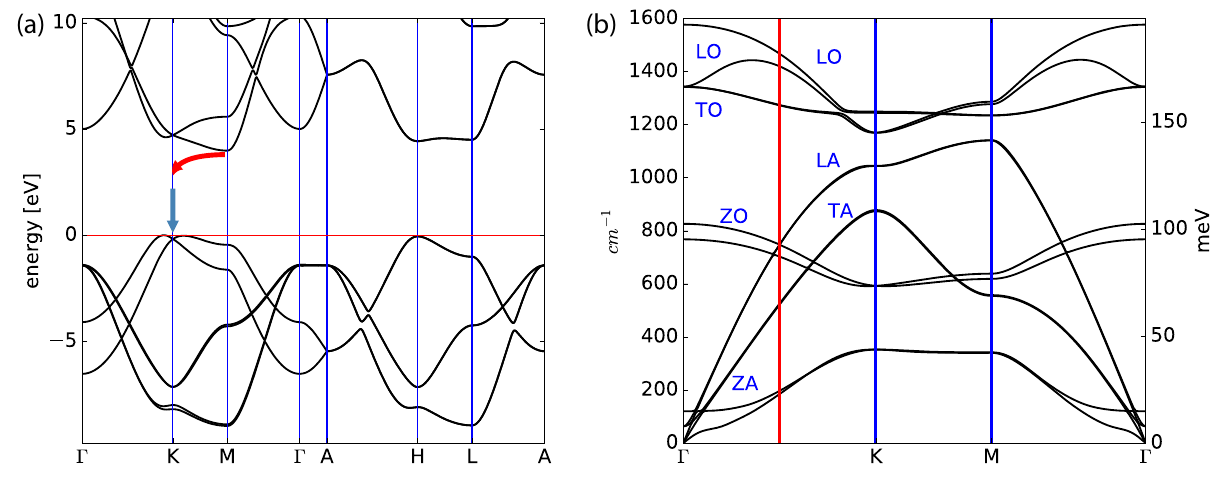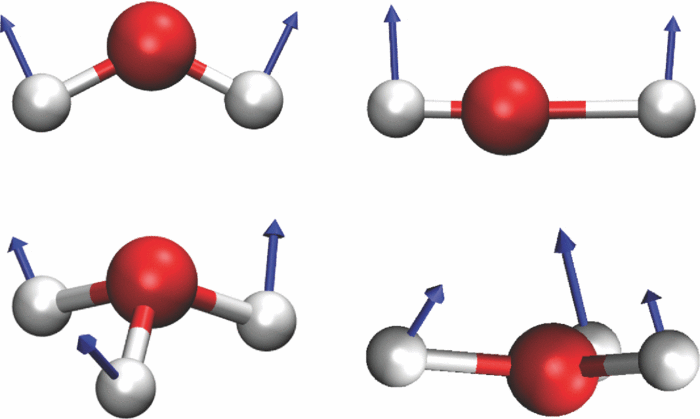Phonon-assisted luminescence by finite atomic displacements: Difference between revisions
| Line 10: | Line 10: | ||
A simpler approach is to use the GW (or Kohn-Sham) band structure to find the momentum responsible for the indirect band gap, in the major part of cases this correspond to the lowest exciton. | A simpler approach is to use the GW (or Kohn-Sham) band structure to find the momentum responsible for the indirect band gap, in the major part of cases this correspond to the lowest exciton. | ||
For example in h-BN we get: | For example in h-BN we get: | ||
[[File:Bn band structure.png|500px|Yambo tutorial image]] | |||
== References == | == References == | ||
Revision as of 08:26, 25 April 2022
In recent years, several articles have been published with Yambo, who calculated the phonon-assisted luminescence by means of finite atomic displacements[1][2][3][4].
In this tutorial we will show how to use YamboPy in combination with Yambo to perform these kind of calculations. For a general review of finite displacements calculations of vibrational properties we recommend this article[5].
Notice that calculation of phonon-assisted luminescence by finite atomic displacements are quite involved and expensive from a computational point of view, for this reason they are limited to relatively simple systems.
Locate the lowest indirect exciton (or indirect band gap)
In this tutorial as example we will consider the hexagonal-BN, that is an indirect insulator. The first step to calculate the phonon-assisted luminescence is to locate the lowest indirect exciton. The cleanest strategy to identify the lowest excitation would be to calculate the excitons along the whole Irreducible Brillouin zone(IBZ), then interpolate them as explained in Interpolate exciton dispersion and find the q point that correspond to the minimum.
A simpler approach is to use the GW (or Kohn-Sham) band structure to find the momentum responsible for the indirect band gap, in the major part of cases this correspond to the lowest exciton.
For example in h-BN we get:

References
- ↑ Theory of phonon-assisted luminescence in solids: Application to hexagonal boron nitride, E. Cannuccia, B. Monserrat and C. Attaccalite, Phys. Rev. B 99, 081109(R) (2019)
- ↑ Exciton-Phonon Coupling in the Ultraviolet Absorption and Emission Spectra of Bulk Hexagonal Boron Nitride, F. Paleari et al. PRL 122, 187401(2019)
- ↑ Excitons under strain: light absorption and emission in strained hexagonal boron nitride,P. Lechifflart, F. Paleari and C. Attaccalite (2022).
- ↑ Phonon-Assisted Luminescence in Defect Centers from Many-Body Perturbation Theory, F. Libbi, P. M. M. C. de Melo, Z. Zanolli, M. J. Verstraete, and N. Marzari, Phys. Rev. Lett. 128, 167401 (2022)
- ↑ Electron-phonon coupling from finite differences, Bartomeu Monserrat, J. Phys.: Condens. Matter 30 083001(2018)
